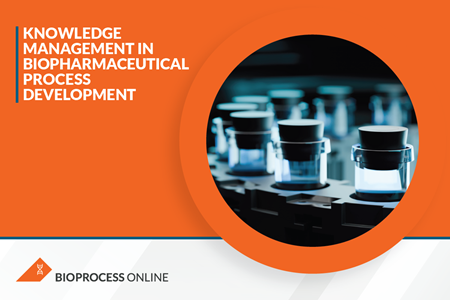Lessons learned from developing potency assays to detect activity and variation for cell- and receptor-mediated products — beyond the comforts of a well-heeled company.
- FDA Leading The Decline Of Animal Testing
- A Flexible Mindset For Bridging Between Cell-Based Assay Groups
- Advanced Manufacturing And CDMOs Are Rewriting The CGT Cost Equation
- Exploring Outsourcing's Role In CGT Scalability And Affordability
- 4 Centralized Comparator Sourcing Models To Fortify Supply Chains
- Governor Josh Shapiro On Supporting Biomanufacturing In Pennsylvania
- Essential Steps For A Successful Analytical Tech Transfer
EDITOR'S DESK
-
Finding Compatibility In Love And CDMO Partnerships
Just like people, some sponsor-CDMO partnerships can be matches made in heaven. Others, not so much. See what experts have to say about finding the right CDMO and building a successful partnership together.
New chief editor of Drug Discovery Online shares insights from BIO 2025’s global biotech gathering and spotlights the impacts to early-stage drug research.
It’s a large and universally recognizable CDMO, so this matters. Swiss-based powerhouse Lonza will increase its focus on biologics, and “advanced synthesis” including for antibody-drug conjugates (ADCs), cell and gene therapies (CGT), and mRNA therapeutics. Will other CDMOs follow suit? What's this say about the future of development outsourcing and our industry?
Bioprocess Online chief editor Tyler Menichiello shares his three key takeaways from the 2025 BIO International Convention.
This summary features key takeaways from the Bioprocess Online Live event, "Challenges And Considerations For Purifying Multispecific Molecules."
GUEST COLUMNISTS
-
A Flexible Mindset For Bridging Between Cell-Based Assay Groups
Transferring cell-based assays for biologics starts with defining operator and equipment parameters, positive and negative controls, and a sufficient dynamic range.
-
Advanced Manufacturing And CDMOs Are Rewriting The CGT Cost Equation
Without contract manufacturers, small biotechs often don't stand a chance of reaching commercial production scales, let alone global access for their drugs.
-
Exploring Outsourcing's Role In CGT Scalability And Affordability
CDMOs give therapy developers access to state-of-the-art production platforms and expertise without the massive up-front investment required for in-house manufacturing.
-
4 Centralized Comparator Sourcing Models To Fortify Supply Chains
A team at Novartis developed models to address the often-overlooked challenge of clinical trial comparator sourcing, a weak link that can derail trials.
-
Essential Steps For A Successful Analytical Tech Transfer
Biologics tech transfer means sharing up to 20 assays. Miss a step, and you risk delays, bad data, and products stuck in limbo.
-
Preparing For FDA's Expanded Use Of Unannounced Inspections At Foreign Manufacturing Facilities
The FDA announced on May 6, 2025, that it intends to expand its use of unannounced inspections at foreign manufacturing facilities. Here are key considerations and actions to take in order to be prepared.
-
Pharma Enterprise Resource Planning: From Automation To AI-Driven Insights
Pharmaceutical firms are increasingly turning to enterprise resource planning (ERP) systems to modernize operations. These platforms unify core functions, including supply chain management, manufacturing, and financial planning and analysis.
-
Managing Extractables And Leachables In HPAPI Manufacturing
These contaminants can compromise the quality, stability, and safety of a drug product, and regulatory bodies mandate assessment to protect patients.
BIOPROCESSING WHITE PAPERS
-
Perspectives On Performance, Scalability, And Regulatory Compliance
Here, we discuss the challenges and solutions for cell and gene therapies, focusing on performance, scalability, and regulatory compliance to accelerate commercialization and improve patient access.
-
Effect Of NK-EVs And Carboplatin On Osimertinib-Resistant Lung Cancer Cells12/18/2024
Delve into a study that examines the possibility of the combination of NK-cell-derived EVs and CBP as a viable immunochemotherapeutic strategy for resistant cancers.
-
Connecting Quality Management, Patient-Centricity, And Business Value2/18/2025
Examine why organizations must integrate data and processes to enhance quality and insights to improve operational efficiency, patient health, and regulatory compliance.
-
Metabolite And Nutrient Analysis As Crucial Components For Optimal Upstream Process2/8/2024
Discover how insights into cell metabolism can further enable the development of efficient cell culture processes through tailored nutrient supplementation and monitoring.
-
Regulatory Frameworks For mRNA Therapeutics3/17/2025
The RNA therapeutics and vaccines market has grown rapidly, driven by siRNA and mRNA technologies. Explore how these advancements are now being applied to cancer vaccines and innovative therapeutics.
-
Supplier Quality Is Only As Strong As Your Weakest Link2/5/2025
Your supply chain is only as strong as its weakest link. 52% of organizations attribute recalls to supplier-related issues, and proactive supplier quality management is essential to protect your brand.
BIOPROCESSING APP NOTES & CASE STUDIES

- Governor Josh Shapiro On Supporting Biomanufacturing In Pennsylvania
- How CGT Leaders Are Reducing Failures, Scaling Processes, And Overcoming Regulatory Friction
- Finding Compatibility In Love And CDMO Partnerships
- BIO2025 Recap: FDA Reducing Animal Testing, Governor Shapiro On Supporting Biopharma, Practical AI Use
- Analytics And Cross-Functional Communication: Keys To Purifying Complex Molecules
- How Modular Facility Design Can Accelerate GMP Facility Construction
- A Facilities Expert Answers Audience Questions On Construction And Validation
BIOPROCESS ONLINE CONTENT COLLECTIONS

This collection of articles digs into the industry’s growing focus on knowledge management as an indispensable facet of biomanufacturing and pharmaceutical development, exploring how it plays into risk management, quality, vendor relationships, and supply chain resilience.
More Content CollectionsFEATURED PRODUCTS AND SERVICES
ON-DEMAND WEBINARS
- Achieving Greater Downstream Recovery By Minimizing Upstream Loss
- Keep Your Upstream Flowing: Global Strategies for Resilience and Redundancy
- Demonstrating A Modular Selectivity With A Weak AEX-HIC Resin For Achieving High mAb Purity And Recovery In A Downstream Process
- Tackling Residual DNA Testing In Biotherapy Manufacturing
- Unlocking Digital Transformation: Embrace CSA For Rapid Innovation
INDUSTRY NEWS
NEWSLETTER ARCHIVE
- 07.18.25 -- STREAM Edition: Clinical Trial Strategy And ADC Dev Partnership
- 07.18.25 -- FDA Quietly Eases Nitrosamine Reporting Rules Ahead Of August Deadline
- 07.17.25 -- Unlock Higher Yields & Purity: Advances In Cell Therapy Processing
- 07.17.25 -- CDMO Opportunities And Threats Report
- 07.16.25 -- Helpful Biosafety Testing Innovations For mAbs Development And Manufacturing




























